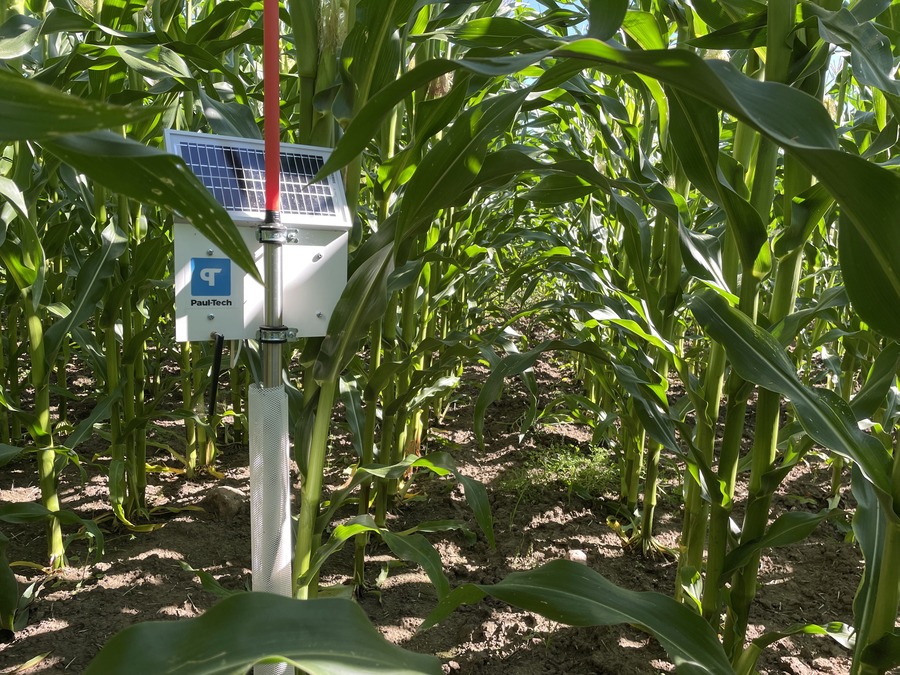
Cover crops have long been used to replenish soils between cash crop seasons. Their effectiveness can be given a general green thumbs-up over the alternative of additional chemical stimulation or complete lack of action.
Yet the incorrect choice of crop, poor introduction and maintenance may severely impede usefulness. Maximising the benefits of our cover choices for next year’s crops could feel overtly scientific and daunting.
Grasping the benefits of cover cropping and understanding simple ways to ensure its effectiveness doesn’t have to be overwhelming. With a simple tool and a bit of benefit-based knowledge, we’ll show you how to optimise and love your off-season planting.
Understanding cover cropping & its soil benefits
Cover cropping involves planting specific crops—such as legumes, grasses, or radishes—during off-seasons to cover the soil. This technique prevents erosion, improves soil fertility, manages water, suppresses weeds and promotes biodiversity.
Despite its numerous advantages, the success of cover cropping depends on proper implementation and continuous monitoring. If continuous monitoring sounds exhausting, don’t fret. You’ll be introduced to the real-time and hands-free solution for it by the end.
Keeping a living root in the soil at all times is the thousands-year long mantra of cover-cropping. Your soil’s structure, irrigation and nutrient retention relies on it.
Benefits of cover cropping
Soil naturally thrives as a living ecosystem in arable land without human intervention.
Roots make pathways and feeding lines for water and organisms within a soil’s structure. Detritus and natural organic decomposition feed plants, insects and microbes, all which support the other and replenish what nutrients the former depletes. A natural circle of life that can be easily disrupted.
Today’s wide-scale farming practices have most often disturbed this cycle. The result of these routines seems to require massive amounts of inorganic and unnatural nutrient input. Poor soil structure and improper nutrient levels inhibit natural uptake by plants and improper foundations for soil virality.
Cover cropping is the natural step back to biodiversity. It allows soils to do what they do best: Sustain life.
Controlling soil erosion
Cover crops act as a protective shield for the soil, reducing erosion caused by wind and water. Their root systems stabilise soil structure, preventing the loss of valuable topsoil.
? See the impact soil erosion has on water pollution, fertility and production
Improving soil fertility
Certain cover crops can fix atmospheric nitrogen into the soil, enriching it with essential nutrients. This natural fertilisation reduces our need for chemical inputs, promoting a healthier soil ecosystem with less intervention.
? Paul-Tech and the University of Leeds discoveries on regenerative agriculture
Enhancing water management
Continuous root structures and organic compositions enhance our soil’s ability to absorb and retain water, reducing runoff and increasing water availability for future crops. This improved water infiltration also stave off the negative effects of drought conditions.
? Discover how soil fertility and its structure are inseparably intertwined
Suppressing weeds naturally
Dense cover crop foliage can effectively suppress weeds by outcompeting them for sunlight and nutrients. This natural weed control reduces the need for herbicides, lowering input costs, preventing over-tilling and reducing our negative environmental impact.
? Human input reduction is as environmental as it is cost-effective
Biodiversity
Cover crops contribute to greater biodiversity, creating habitats for beneficial insects and microorganisms. This often leads to a more resilient agricultural ecosystem, capable of withstanding pests and diseases.
Our ability to let nature do the heavy lifting summons the old adage of ‘work smarter, not harder.’ The issues we face in cover cropping are not the benefits, but our understanding of how to effectively cultivate them.
Maximising the effectiveness of cover cropping
To maximise the benefits of cover cropping, it’s crucial to monitor and evaluate its effectiveness continuously.
Our team has outlined some key indicators and tools to help you gauge the success of your cover cropping efforts. If real-time monitoring and evaluation seems out-of-reach, we’ll show you how to use Paul-Tech soil stations to effectively manage your cover crops, and even choose the right ones ahead of time.
Assess your soil’s health
Regular soil testing can provide valuable insights into nutrient levels, organic matter content, and soil structure. These tests are designed to help you understand the impact of cover crops on soil fertility and overall health.
The challenges we face in manual soil testing comes in the form of cost and time, and the ability to thoroughly assess intense, complicated data. Benefits do exist, but optimising them is a true feat.
Paul-Tech soil stations provide that data in real-time without intervention and assess the information rigorously, providing recommendation and thorough reports. Farmers like Aru PM use Paul-Tech to analyse over 4000 hectares of cereals, grass and oilseeds, and reduce their input costs by €56,000.
Monitor your soil moisture
Using soil moisture sensors, like those offered by Paul-Tech, can help track water infiltration and retention in the soil. This data is crucial for optimising irrigation practices and ensuring that cover crops are effectively managing soil moisture.
Soil moisture levels and structure continue to change year-round. Effective monitoring of cover crops between cash crop seasons is vital. When it’s time to plant, your soil’s ability to hold and offer nutrients and proper hydration can be properly assessed.
This knowledge is the best weapon we have in mitigating risks like dry zones, pests and leaching.
Keep an eye open
Throughout your cover crop season, you’ll want to keep an active observation on your field’s weed density and overall biomass covering. Generally, a thicker biomass can be correlated with greater soil protection and nutrient cycling. Note the diversity of weeds to cover crops, and monitor their effectiveness in reduction to unwanted growth.
Paul-Tech soil stations will provide information year-round on the nutrient levels found in your soil. This information is vital for understanding how much fertiliser input is necessary when planting, during the growth season, or post-harvest.
Using Paul-Tech to enhance cover cropping effectiveness
Paul-Tech soil stations offer unbeatable monitoring solutions to ensure your cover cropping efforts yield the best results. Each station provides real-time data on soil health, moisture levels and nutrient content. These stations enable precise decision-making and optimization of your cover cropping practices.
How does Paul-Tech work?
Our goal is to elevate current technology from its limited state of monitoring, and bring better reports and science into it. Today, Paul-Tech soil sensors measure everything from nutrient levels in soil, to plant nutrient values and moisture content, providing a thorough understanding of when plants are unable to benefit from added water content and chemicals.
In short, Paul-Tech soil stations provide continuous data on soil conditions, allowing you to track improvements in soil health from cover cropping. This smart-farm approach ensures you can make informed decisions to enhance soil fertility and structure in-the-moment, not after it’s passed.
With accurate soil moisture readings, Paul-Tech stations help you manage irrigation more effectively too. Your cover crops require and can receive adequate water without over-irrigation, promoting better growth and soil protection in the off-season.
Real-time nutrient monitoring allows for precise application of fertilisers, ensuring cover crops receive their necessary nutrients without excess use. This balanced approach prevents nutrient runoff and promotes sustainable, profitable farming. This nutrient optimisation is the common thread all our farmers see when choosing Paul-Tech.
See Paul-Tech in action for free
Cover cropping is a powerful tool for improving soil health, preventing erosion and enhancing agricultural sustainability. By carefully selecting, managing and monitoring cover crops, farmers can maximise their benefits and overcome potential challenges. Cover crops don’t have to be a limited, tricky solution to your farm’s overall health.
For a deeper understanding of your plant and soil health, and to receive personalised recommendations you can rely on, explore our advanced soil monitoring solutions for free. We’re excited to see you grow.


